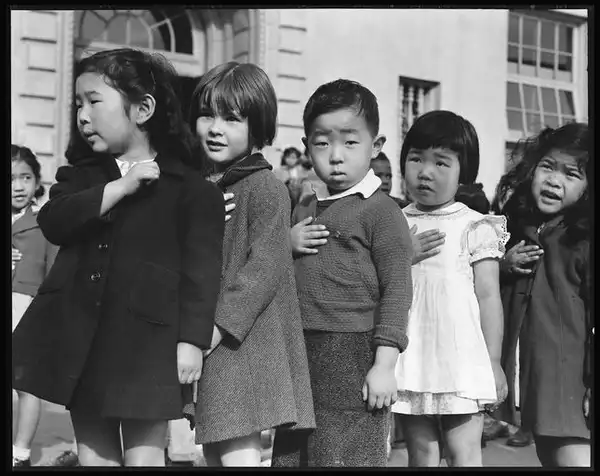Teaching Guide, Book, Article Chicago Asian American Ethnic Neighborhoods
- Grade Level 3rd-5th Grade
- Time Period Early 1900s - 1969
Introduction
This resource set helps students understand how immigration influences the growth and change of neighborhoods over time. Students will explore Asian American ethnic neighborhoods in Chicago and examine how these communities have contributed to the city’s cultural fabric. Through primary sources, books, and articles, students will investigate the transformation of areas like Koreatown, Japantown, and Chinatown and reflect on how these spaces evolve and contribute to identity, economics, and social development.
ARTICLES
WBEZ: “A Sign from the Past: What Happened to Chicago’s Koreatown?”
WBEZ: “What Happened to Chicago’s Japanese Neighborhood?”
SAAPRI: IL South Asian American Civic Engagement Roadmap (Updated Nov 2018)
SAAPRI: South Asian Demographic Report (connect to mapping/ Chicagoland geography)
BOOKS
Chinese Chicago: Race, Transnational Migration, and Community Since 1870 by Huping Ling (2012)
Chinese in Chicago: 1870 - 1945 by Chinatown Museum Foundation (2005)
Korean Americans in Chicago by Kyu Young Park (2003)
Asian Indians of Chicago by Indo-American Center (2003)
Japanese Americans in Chicago by Alice Murata (2002)
ACTIVITY IDEAS
Mapping Ethnic Neighborhoods
Objective: Understand how Asian American ethnic neighborhoods have evolved geographically.
Activity: Students will use resources like the SAAPRI South Asian Demographic Report and mapping tools to create a map of Chicago’s Asian American ethnic neighborhoods, identifying changes over time. They will add key landmarks such as cultural centers, businesses, or community hubs that represent each ethnic group’s contributions. Students can compare historical and modern maps to show how these neighborhoods have expanded or shifted.
Cultural Comparison Study
Objective: Examine how different Asian American communities in Chicago have contributed to the city’s cultural and economic landscape.
Activity: Using books such as Chinese Chicago or Korean Americans in Chicago, students will compare the experiences of different ethnic groups in the city. In groups, students can research one of the ethnic neighborhoods (e.g., Koreatown, Chinatown) and prepare a visual display showcasing the cultural, social, and economic impact of that community, considering factors like food, language, traditions, and businesses.
Historical Reflection and Discussion
Objective: Discuss how the history of Asian American immigration has shaped local neighborhoods.
Activity: After reviewing the WBEZ articles on Koreatown and Japantown, students will hold a class discussion about the lasting impact of immigration on these neighborhoods. They will analyze how the neighborhoods have changed over time, considering aspects such as demographic shifts, changes in business types, and the ways that cultural identity is maintained or altered. Students can also explore the idea of “cultural preservation” in the face of gentrification and changing local economies.
Essential Questions
How did various Asian American neighborhoods form in Illinois?
How have these neighborhoods changed over time, and how might they change in the future?
How does immigration change a geographic area over time? What are spaces or forms where these changes may be seen, tasted, or heard?
